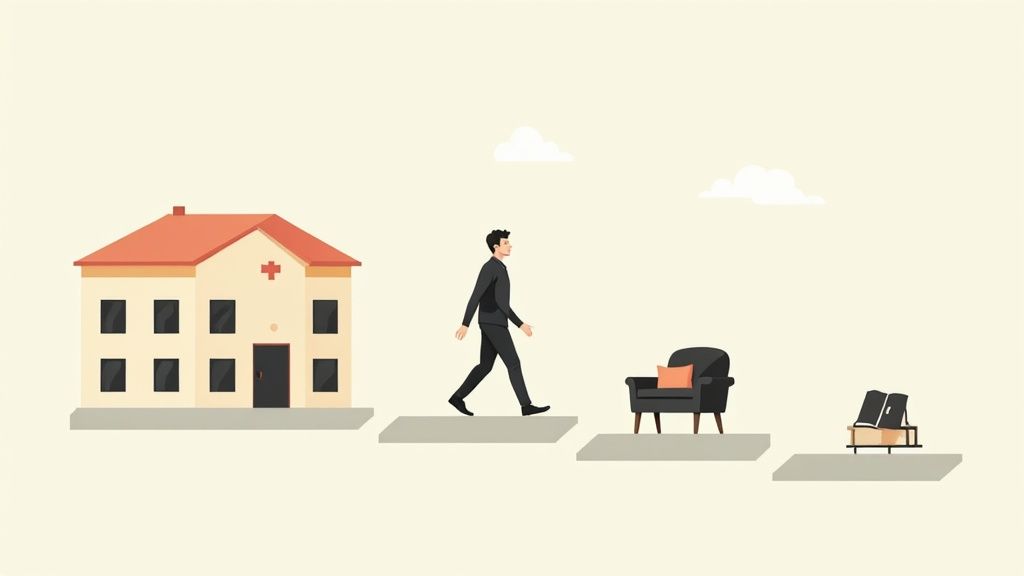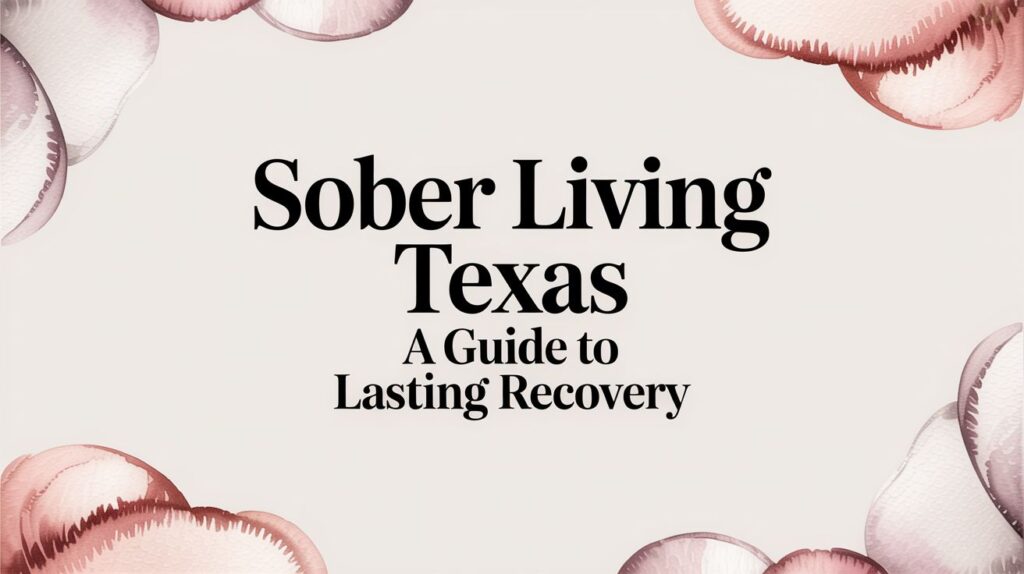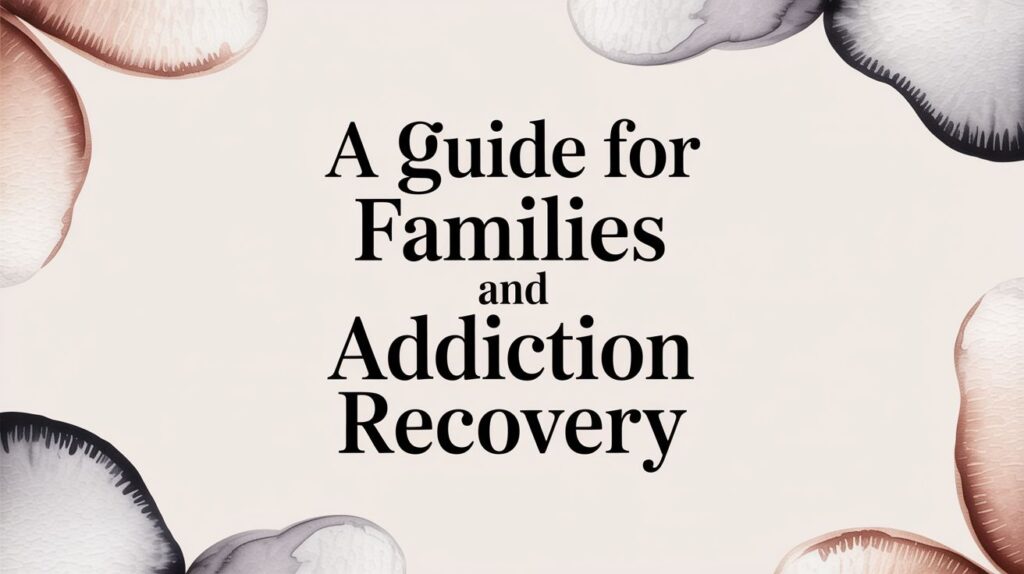An Intensive Outpatient Program, or IOP, is a structured treatment program designed for mental health or substance use that lands somewhere between weekly therapy sessions and a full-time residential stay. It gives you the chance to live at home and keep up with your daily responsibilities—like work, school, or family life—while still getting several hours of focused therapy multiple days a week.
Think of it as a middle ground that provides serious, consistent support without forcing you to hit pause on your entire life.
Defining the Role of an IOP in Recovery

When many people picture recovery, they see it as an all-or-nothing choice: either you check into a 24/7 facility, or you’re on your own with a single therapy appointment each week. IOPs were created to fill that huge, critical gap in between.
These programs are built for people who need a significant level of care but have a stable home environment and don’t require around-the-clock medical supervision to stay safe.
Bridging Treatment and Real Life
Let’s use an analogy. Imagine you just had major knee surgery. Your surgeon wouldn't just send you home with a pamphlet and a follow-up appointment a month away. You'd almost certainly get a prescription for intensive physical therapy—several sessions a week dedicated to rebuilding strength, mobility, and function.
An IOP works on the exact same principle, but for your mental and behavioral health. It’s a rigorous "rehabilitation" schedule that helps you practice and apply new coping skills in real-time, right in the middle of your actual life.
This structure is at the very heart of the IOP philosophy. Instead of learning strategies in a protected bubble, you might learn a new communication skill in your morning group session and use it with your family that same evening. This immediate application is what makes the skills stick, building a truly solid foundation for long-term recovery. We explore this concept more deeply in our guide that explains in detail how rehab works and its different levels.
The true power of an IOP is its balance. It offers the structure and intensity needed for meaningful change while empowering individuals to remain connected to their communities, careers, and support systems.
To give you a clearer picture, let's break down the core features of an IOP. The table below outlines what you can typically expect from this level of care.
IOP at a Glance: Key Program Features
| Feature | Description |
|---|---|
| Time Commitment | Typically 9 to 15 hours per week, spread across 3 to 5 days. Sessions often run for 3 hours at a time. |
| Living Situation | You live at home or in a sober living environment, allowing you to maintain your daily life and responsibilities. |
| Core Services | A mix of group therapy, individual counseling, psychoeducation, and skills-building workshops. |
| Flexibility | Many programs offer morning, afternoon, or evening sessions to accommodate work, school, or family schedules. |
| Real-World Application | Provides the unique opportunity to practice recovery skills in your actual environment between sessions. |
| Support System | Fosters a strong sense of community and peer support through structured group therapy sessions. |
These components work together to create a supportive and effective treatment experience that integrates seamlessly into your life.
A Proven and Flexible Model
The IOP model isn't just a convenient choice; it's a clinically effective one. Research has consistently shown that these programs achieve high levels of patient engagement and satisfaction.
One study that followed individuals through a four-month IOP found that a majority successfully completed the program. This highlights how well the model can integrate into participants' lives while still providing the necessary level of care. You can learn more about these findings on IOP adaptability at the National Library of Medicine.
By offering services on multiple days per week, often with flexible scheduling, IOPs provide consistent, reinforcing support that helps new, healthy behaviors become second nature.
Who Is an IOP Really For?
Figuring out the right level of care can feel overwhelming. Is it weekly therapy? Inpatient rehab? Something in between? An intensive outpatient program (IOP) is designed for a very specific person at a specific moment in their recovery journey. It’s not about how “bad” a problem is, but about what someone needs right now to build real, lasting momentum.
Think of an IOP as the sweet spot for someone who needs more structure than a once-a-week therapy session but doesn't require 24/7 supervision to stay safe.
Take someone like ‘Maria,’ a college student battling an eating disorder. She knows she needs intensive, structured help, but pulling out of school and losing a whole semester just isn't an option. An IOP gives her the perfect balance—multiple therapy sessions a week to tackle the root issues while still letting her keep up with classes.
Or consider ‘David,’ who just finished a 30-day inpatient program for alcohol use. He’s stable, but stepping back into his old environment without a safety net is a huge risk. For David, an IOP is the ideal "step-down." It provides a structured, supportive space to navigate real-world triggers and practice the skills he learned in rehab, dramatically cutting his risk of relapse.
Key Indicators an IOP Is a Good Fit
While there are no rigid rules, an IOP is most effective when a few key pieces are in place. These are strong signs that this level of care lines up with what a person needs.
A great candidate for an IOP usually has:
- A Safe and Stable Home Environment: Since you’re living at home, a supportive, safe, and substance-free place to land each night is non-negotiable for success.
- Sufficient Motivation for Recovery: IOPs demand active participation. The right person is ready to show up, do the work in sessions, and try out new skills between appointments.
- No Need for Medical Detox: You have to be medically stable. If someone is facing severe withdrawal or needs constant medical monitoring, a higher level of care like detox or inpatient is the necessary first step.
- The Ability to Self-Manage: While the program provides structure, you still need a degree of personal accountability to handle daily life and get to your sessions consistently.
Who an IOP Is Not For
It’s just as important to know who an IOP isn’t for. This level of care is not built to handle acute crises, and putting someone in an IOP at the wrong time can be ineffective or even unsafe.
An Intensive Outpatient Program is not a crisis stabilization service. It is designed for individuals who are medically and psychiatrically stable enough to live independently while engaging in rigorous treatment.
For example, someone struggling with severe suicidal thoughts, active psychosis, or an inability to stop using substances despite immediate harm would need the 24/7 supervision and safety of an inpatient or residential facility. An IOP simply doesn't have the constant monitoring required to keep someone safe during those critical moments. It's a powerful tool, but only when it's the right tool for the job.
A Look Inside a Typical Week in an IOP

It’s easy to talk about IOPs in the abstract, but what does a week actually look like? The idea of "intensive" treatment can sound overwhelming, but it's not a full-time, live-in commitment. Think of it as a highly structured, part-time schedule of therapy designed to fit into your real life.
The core of most programs is a weekly time commitment of 9 to 15 hours. This is usually spread across three to five days, with each session lasting about three hours. Many centers offer morning and evening tracks, giving you the flexibility to keep your job, stay in school, or manage family responsibilities.
This schedule is deliberate. It creates a steady rhythm of support that helps you build momentum in your recovery without pulling you completely out of your home environment. The goal is to weave healing into the fabric of your week.
The Building Blocks of Treatment
An IOP isn't just a random collection of meetings. A quality program is a carefully constructed blend of different therapy types, with each piece playing a specific role. They work together to address your needs from multiple angles, creating a much more robust and well-rounded experience than just one weekly therapy session.
Here’s a breakdown of the core services that make up a typical week:
- Group Therapy: This is the heart and soul of nearly every IOP. In these sessions, you connect with peers who genuinely get what you're going through. It’s a safe space to share your own story, hear from others, and practice new skills like setting boundaries or communicating more effectively.
- Individual Counseling: Your one-on-one time with a dedicated therapist is where you can dig into the deeper, more personal issues. This is the place to tackle specific traumas, co-occurring disorders, or anything you might not feel ready to share with a group.
- Family Therapy: Recovery rarely happens in a vacuum. Family sessions are designed to mend strained relationships, teach healthier communication, and educate your loved ones on how they can best support you. This helps create a stronger, more informed support system right where you live.
- Psychoeducational Workshops: These are practical, skill-building classes. You’ll learn the science behind addiction or mental health, develop concrete coping skills to handle triggers, and create actionable plans to prevent relapse.
A well-designed IOP integrates these elements seamlessly. You might learn about managing triggers in a workshop, process a personal example in individual therapy, and then get real-world feedback from your peers in a group session—all within the same week.
This layered approach ensures that what you learn isn't just theoretical. You immediately get to process, practice, and reinforce it, making the skills much more likely to stick when you're faced with a real-world challenge. It’s this constant application that turns therapeutic concepts into lasting change.
How IOPs Compare To Other Levels of Care
Figuring out the right path for recovery means understanding the whole spectrum of care available. An intensive outpatient program (IOP) isn't just some standalone option; it’s a specific level on a continuum of support, perfectly designed to bridge the gap between 24/7 supervision and standard weekly therapy.
Think of treatment levels like different volumes of support. On one end, you have inpatient or residential care, which is like a protective bubble—total immersion with around-the-clock medical and therapeutic oversight. On the other end is traditional outpatient therapy, which is more like a weekly check-in to process challenges and fine-tune your coping skills.
An IOP sits right in the middle, offering a powerful balance of structure and real-world freedom.
IOP vs. Partial Hospitalization Programs (PHP)
One of the most common comparisons is between an IOP and a Partial Hospitalization Program (PHP). While they are both intensive day programs, the main difference comes down to the time commitment. A PHP is basically a full-time job, requiring you to be there for about 20-30 hours per week, often five days a week for most of the day.
An IOP, on the other hand, demands less time—typically 9 to 15 hours a week, spread across three to five days. This flexibility makes an IOP a much more manageable option for people who need to keep up with work, school, or family responsibilities while still getting a high level of structured care.
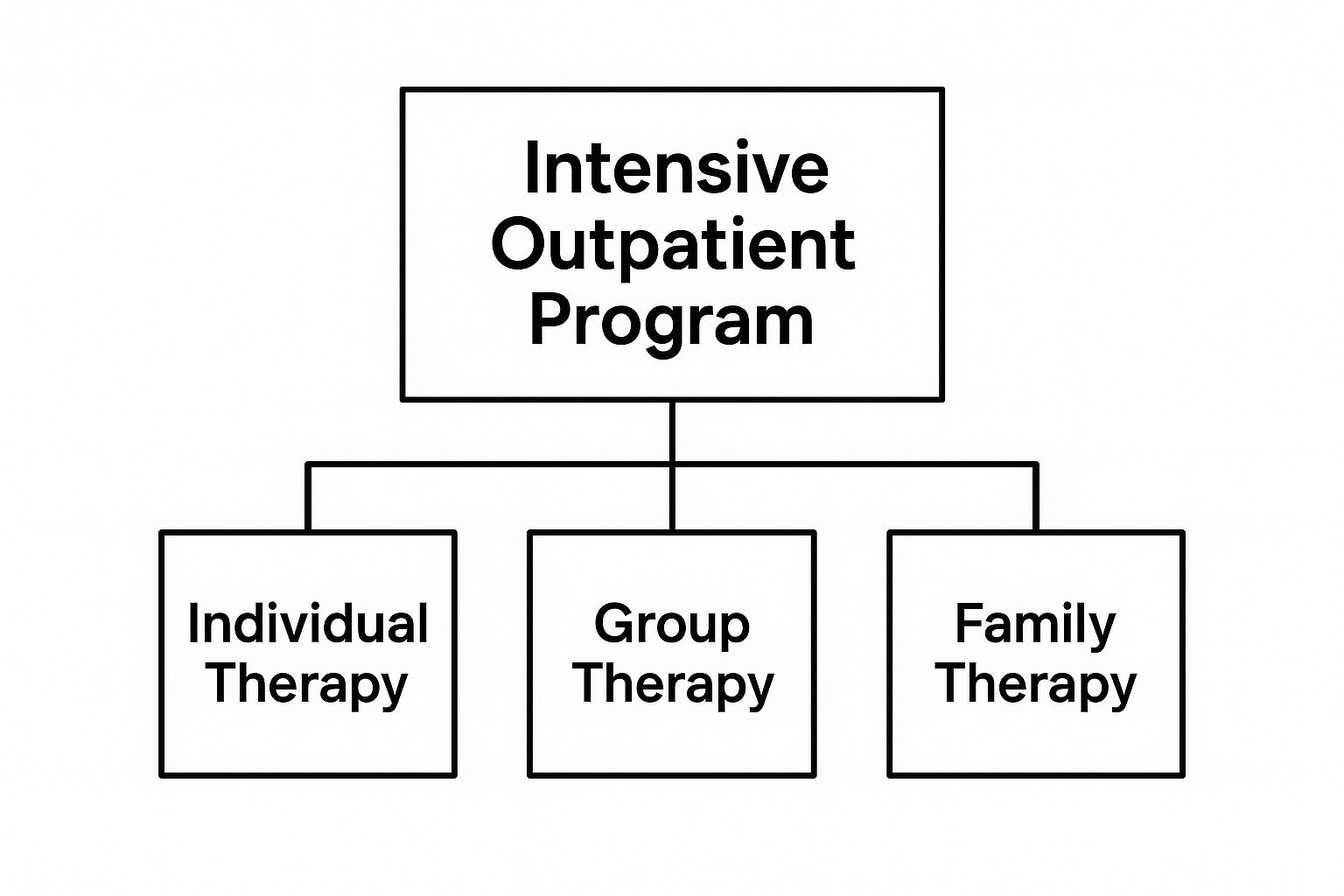
This structure shows how an IOP integrates multiple therapeutic layers—individual sessions, group work, and family therapy—to provide comprehensive support without taking over your entire day.
IOP vs. Residential and Inpatient Treatment
The biggest difference between an IOP and residential care is the living situation. In a residential or inpatient program, you live at the facility, completely removed from your daily environment and its potential triggers. This level of care is critical for anyone who needs medical stabilization, detoxification, or a highly controlled setting to stay safe. You can get a deeper look into this immersive approach by reading about what rehab is and how it works.
An IOP, however, lets you live at home. This is designed for people who are medically stable and have a supportive home life. The huge advantage here is that you can immediately apply what you learn. You might discover a new coping skill in a morning group session and put it to the test in a real-world situation that very same afternoon.
To make these differences even clearer, here's a side-by-side comparison.
Treatment Levels Compared: IOP vs. PHP vs. Inpatient vs. Outpatient
| Level of Care | Time Commitment (per week) | Living Arrangement | Best For |
|---|---|---|---|
| Inpatient/Residential | 24/7 | Live at the facility | Medical detox, severe SUD, unstable home environments, high safety risks. |
| PHP | 20-30 hours | Live at home or sober living | Stepping down from inpatient or needing high-intensity care without full admission. |
| IOP | 9-15 hours | Live at home | Medically stable individuals who need structured support while maintaining work, school, or family life. |
| Outpatient | 1-3 hours | Live at home | Milder SUD or as a long-term step-down to maintain recovery skills. |
As you can see, choosing a level of care isn’t about which one is "better," but about which one is the right fit for your current needs for safety, structure, and support.
What's really encouraging is that research consistently shows IOPs are incredibly effective. Evidence going back to the 1960s indicates that for many people, the long-term outcomes for substance use recovery in IOPs are just as good as those in inpatient settings, with 50% to 70% of participants staying sober. This proves that a more restrictive environment doesn't always lead to a better result, making IOPs a powerful and often more accessible alternative.
The Real Benefits of Choosing an IOP
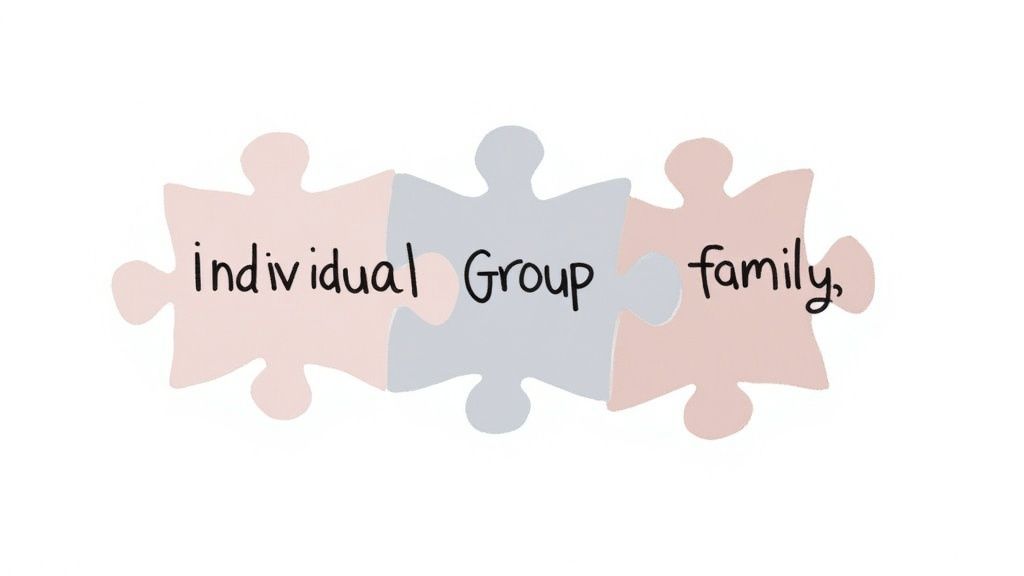
Choosing a path to recovery isn't just about picking a program; it's about finding a level of care that fits your actual life. An intensive outpatient program (IOP) shines by weaving recovery directly into your daily routine, making it a uniquely powerful option for creating change that sticks. These benefits aren't just a simple checklist—they ripple out, touching every part of your world.
One of the biggest wins is the ability to apply new skills in real time. Think about it. You learn a new way to handle a sudden craving or a wave of anxiety in your afternoon group session. With an IOP, you don't file that information away for later. You get to take that exact skill home and use it that very evening, immediately reinforcing the lesson when it matters most.
This constant, real-world practice is what cements therapeutic concepts into lasting habits. It’s how you build a rock-solid foundation for long-term recovery, one day at a time.
Balancing Recovery with Real Life
The flexibility of an IOP is, for many people, a total game-changer. Unlike residential programs that demand you hit pause on your entire world, an IOP is built to work alongside your existing commitments.
This means you can:
- Maintain Your Career: Attend therapy in the morning or evening without having to step away from your job.
- Stay in School: Keep up with your classes and coursework while getting the structured support you need to succeed.
- Be Present for Family: Remain at home to care for your children or support your loved ones, making them part of your healing process.
This structure doesn't just make treatment more accessible; it dramatically cuts down on the stress of feeling like you're falling behind professionally or personally. The numbers show a clear trend toward this kind of integrated care. According to SAMHSA data, 82% of U.S. treatment facilities offer outpatient options, and about 45% provide IOPs specifically. You can find more addiction treatment statistics from Addiction Help.
An IOP empowers you to heal within your own environment, transforming your daily life into the very place where recovery takes root and grows strong.
On top of that, IOPs are significantly more affordable than inpatient care, which removes a huge barrier for many people seeking help. You also get to build a powerful, local support system with peers from your own community—people who genuinely get the specific challenges and resources in your area. This blend of real-world practice, flexibility, and community connection makes an intensive outpatient program an incredibly effective path to lasting wellness.
How to Find the Right IOP for You
Taking that first step toward recovery is a huge deal, but figuring out where to go can feel completely overwhelming. The secret isn't just finding a program—it's about finding the right one that actually fits your life and your specific needs. Let's break down how to do that with a clear, step-by-step plan.
https://www.youtube.com/embed/d-mVGYYCveE
First things first: get a professional assessment. This is non-negotiable. A clinician or mental health professional can take a look at your unique situation and confirm if an IOP is truly the right level of care for you. This one meeting removes all the guesswork and makes sure you’re starting on the right track from day one.
Once an IOP is recommended, it's time to start looking at the practical side of things.
Vetting Potential Programs
Here's the truth: not all IOPs are created equal. To find a high-quality provider that will genuinely help, you need to know what to look for and what questions to ask. A little bit of homework now will help you tell the difference between a place that just offers services and one that delivers truly effective, personalized care.
Your checklist should zero in on these key areas:
- Accreditation and Licensing: Make sure the facility is licensed by the state and accredited by a recognized organization like The Joint Commission or CARF. This is the baseline for quality and safety.
- Insurance Verification: Call potential programs and your insurance provider to get the full picture of your coverage. You'll want to ask about co-pays, deductibles, and whether you need pre-authorization to avoid any surprise bills down the line.
- Therapeutic Approaches: Ask them what specific, evidence-based therapies they use. Do they offer Cognitive Behavioral Therapy (CBT), Dialectical Behavior Therapy (DBT), or maybe EMDR for trauma? The right clinical approach is absolutely vital for your success.
Finding the right fit is about more than just a convenient location or schedule. It’s about finding a clinical team and a community culture where you feel seen, understood, and supported.
Once you have a shortlist, it's time to dig a little deeper. Ask about the program's core philosophy on recovery. What are the qualifications of their clinical staff? What does their plan for aftercare and relapse prevention look like? A solid program will have clear, confident answers and a real commitment to your long-term health.
Answering Your Questions About IOPs
When you're exploring treatment, it’s natural to have questions. Getting clear, straightforward answers about how an intensive outpatient program actually works can give you the confidence to take the next step.
Let's walk through some of the most common questions people ask when they're considering an IOP.
How Long Does an IOP Last?
There’s no one-size-fits-all timeline, as your program should always be tailored to your clinical needs and progress. That said, most IOPs run for about 8 to 12 weeks.
Think of it less as a rigid schedule and more as the time needed to help you feel stable and truly confident in your new coping skills. Your treatment team will work with you the entire way, making sure you’re ready before you transition to a less intensive level of care.
Can I Use Insurance to Cover an IOP?
Yes, almost always. The vast majority of major health insurance plans cover intensive outpatient programs. This is because IOP is widely recognized as a medically necessary and effective form of treatment for both mental health and substance use disorders.
Of course, it’s always smart to call your insurance provider directly to verify your specific benefits. Things like co-pays, deductibles, and whether you need pre-authorization can vary from plan to plan.
Can I Still Work or Go to School?
Absolutely. In fact, this flexibility is one of the biggest reasons people choose an intensive outpatient program. IOPs are built to fit into your real life, not take you out of it.
You can keep up with your job, classes, and family commitments because sessions are typically offered at different times of the day—mornings, afternoons, or evenings. This structure lets you get the robust support you need without having to press pause on your entire life.
At Altura Recovery, we believe that recovery should support your life, not disrupt it. Our flexible IOP options are designed to deliver expert care that works with your daily schedule. Learn more about our approach and start your journey with us today.

